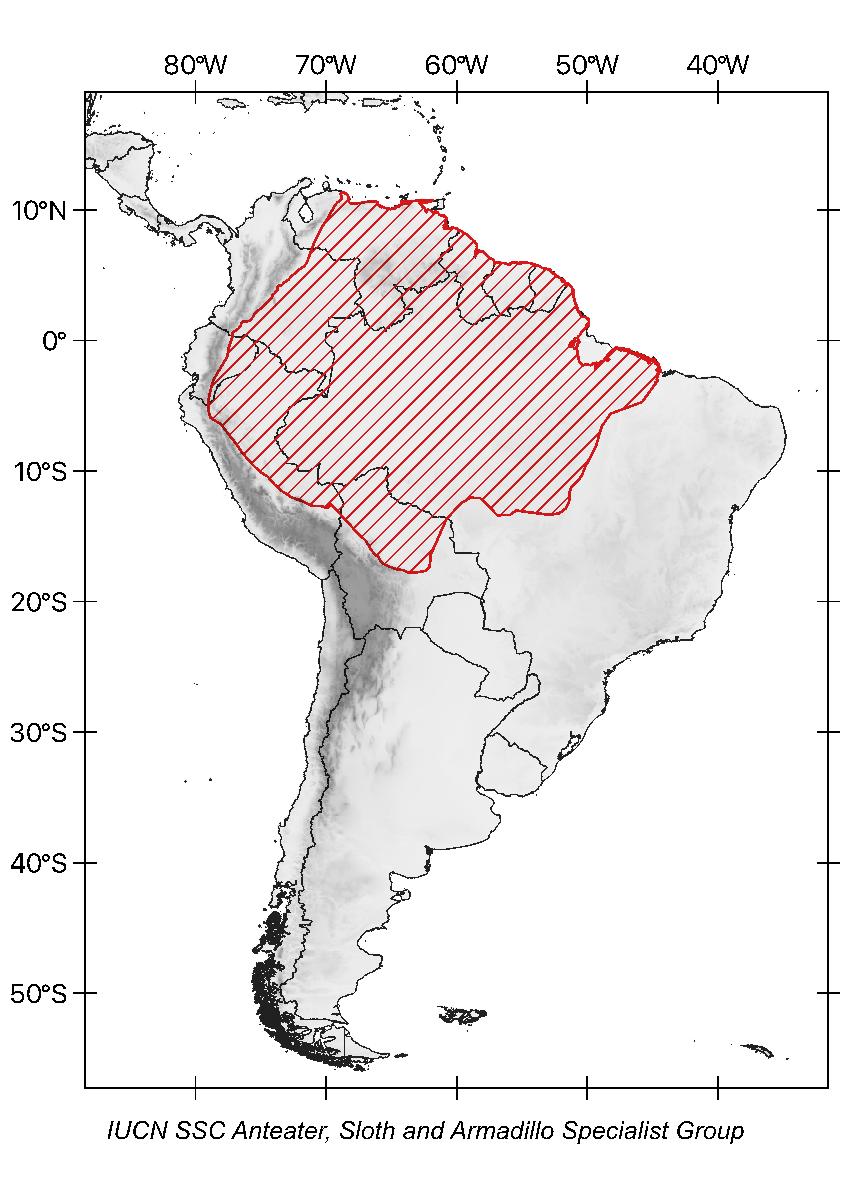Amazon Naked-tailed armadillo
(Cabassous unicinctus)
other common names
–
Taxonomy
Order: Cingulata
Family: Chlamyphoridae
Subfamily: Tolypeutinae


description
Cabassous unicinctus has a head-body length of 35–44 cm, a tail of 16–20 cm length, and it weighs 2.5–3.6 kg. Its carapace is dark grey, with a clear, pinkish band around its lower part. There are 10–13 bands on its carapace, the claws are long, and its grey tail is naked, i.e., it lacks the complete armor present in other armadillos.

range
This species occurs east of the Andes in Colombia, Venezuela, the Guianas, northern Brazil, Ecuador, northeastern Peru, to Mato Grosso do Sul (Brazil) and Bolivia in the south.

HaBITAT and ECOLOGy
Cabassous unicinctus inhabits tropical lowland and submontane forests in the Amazon and Orinoco region, as well as in the ecotone between forested areas and grasslands in the seasonally flooded Llanos.
This solitary, primarily fossorial species can be nocturnal or diurnal. It often constructs burrows in termite mounds or riverbanks. It rotates its body while digging, forming a round burrow.
The limited number of records suggests that it is a rare species.

reproduction
Not much is known about the reproduction of this species. It presumably gives birth to a single young per litter.

diet
The Amazon naked-tailed armadillo is an insectivore that mainly feeds on ants and termites.

curious facts
Cabassous unicinctus looks very similar to the giant armadillo because its carapace is grey with a pinkish border. As a consequence, adult individuals are often mistaken for juvenile giant armadillos. The two can easily be told apart by looking at their tail.

threats
The species is mainly affected by habitat loss due to deforestation for agroindustrial activities. It may be hunted throughout its rainge, but it is not a target game species. Vehicle collisions have been reported, but seem to be relatively rare.

Population trend
Unknown.

conservation status
Cabassous unicinctus is listed as Least Concern in view of its wide distribution, presumed large population, its occurrence in a number of protected areas, and because it is unlikely to be declining fast enough to qualify for listing in a threatened category. It is, however, affected by habitat loss.